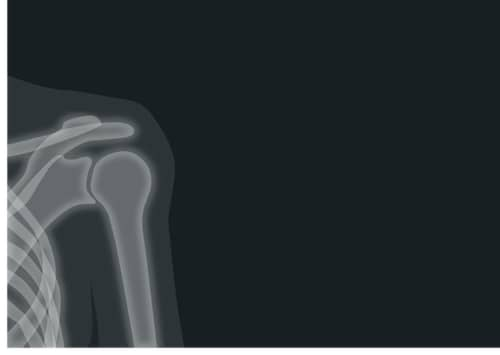What exactly is chronic pain, and how do you know if you have it? Pain is an essential alarm system for the body, telling you that something is wrong. But when pain becomes constant, lasting beyond the typical healing period, it can shift from a warning sign to a persistent companion that affects every part of your life. Chronic pain is defined as pain lasting for more than three months, and it affects about 20% of adults in the United States.
How Long Does Pain Have to Last to Be Chronic?
Chronic pain is typically defined as pain that persists for 12 weeks or longer. But beyond the timeframe, what sets chronic pain apart is that it can continue even after the original injury or illness has healed. This is in contrast to acute pain, which is sharp and sudden but subsides when the injury is treated.
A survey conducted by the CDC found that approximately 50 million Americans suffer from chronic pain, and among them, 19.6 million experience high-impact chronic pain, meaning it limits at least one major life activity (source). This isn’t just a physical issue; it’s a societal one.
Is Your Pain Chronic or Just Lingering?
How do you know if the pain you’re experiencing is chronic rather than just lingering or recurring? Here are some indicators that may help:
- Duration: The pain has lasted beyond three months.
- Frequency: The pain is present most days of the week.
- Impact on Life: It affects your sleep, work, and emotional well-being.
- Doesn’t Respond to Treatment: Over-the-counter medications or typical treatment options don’t bring sufficient relief.
If you are consistently feeling pain that limits your day-to-day activities, you may be dealing with chronic pain. Unlike a sore back after moving furniture, chronic pain tends to linger without an apparent or current cause.
Did You Know?
People suffering from chronic pain are four times more likely to experience anxiety or depression than those without chronic pain (source).
Common Causes of Chronic Pain
Chronic pain can develop from a variety of causes. Sometimes, the reason is obvious, such as a previous injury that never healed correctly, but in other cases, the root cause may be less clear. Here are some of the most common causes of chronic pain:
- Injuries: Old injuries or traumas that didn’t heal properly.
- Nerve Damage: Nerve pain, often referred to as neuropathic pain, is a common reason behind chronic discomfort.
- Underlying Health Conditions: Conditions like arthritis (which affects over 24% of the adult population) or fibromyalgia can lead to ongoing pain.
- Unknown Causes: In some cases, there might be no clear cause at all, making diagnosis and treatment challenging.
Did you know?
Chronic lower back pain is one of the most common reasons for disability in the United States, costing Americans at least $100 billion annually in lost wages and medical expenses.
Recognizing the Symptoms of Chronic Pain
So, how does chronic pain manifest itself? Chronic pain may vary from a dull ache to severe, shooting pain, and it often comes with additional symptoms like:
- Fatigue: Persistent pain often causes poor sleep quality, leading to fatigue.
- Stiffness and Limited Mobility: Especially in joint-related pain, which can affect the ability to move freely.
- Mood Changes: Depression and irritability are common. Chronic pain can affect your mental health, causing anxiety and stress.
The intensity of the pain can also change over time or vary from day to day, making it even more frustrating to manage.
Types of Chronic Pain by Duration and Intensity
| Type of Pain | Average Duration | Intensity Level (1-10) |
|---|---|---|
| Neuropathic Pain | Over 6 months | 7-10 |
| Arthritic Pain | 3+ years | 5-8 |
| Fibromyalgia | Constant | 4-9 |
| Migraines | Episodic but chronic | 6-10 |
Note: The intensity is subjective, and each individual may experience these differently.
Pain Intensity by Chronic Condition
| Chronic Condition | Average Pain Intensity (1-10) |
|---|---|
| Arthritis | 7.0 |
| Fibromyalgia | 8.0 |
| Migraines | 9.0 |
| Neuropathic Pain | 8.5 |
This histogram illustrates the average intensity of pain experienced by individuals with different chronic conditions. Conditions such as migraines and neuropathic pain are often reported to have higher intensity, making effective pain management crucial for improving quality of life.
Why It’s Crucial to Recognize Chronic Pain Early
Why is early recognition important? Chronic pain doesn’t only affect the body. The longer it persists, the more impact it has on mental health, relationships, and productivity. In fact, the American Psychological Association states that early intervention can significantly reduce the impact of chronic pain on both emotional and physical health.
The economic cost of untreated chronic pain is substantial. In 2019, the estimated costs associated with chronic pain treatment and lost productivity exceeded $560 billion annually in the United States alone.
Impact of Chronic Pain on Emotional Well-Being
| Emotional Issues | Percentage of People with Chronic Pain (%) |
|---|---|
| Depression | 60% |
| Anxiety | 50% |
| Irritability | 70% |
This histogram highlights the emotional impact of chronic pain, showcasing the high prevalence of issues such as depression, anxiety, and irritability among individuals suffering from chronic pain. Recognizing and addressing these emotional effects is a crucial part of comprehensive pain management.
What to Do if You Think You Have Chronic Pain
If you suspect you might be experiencing chronic pain, it’s essential to consult a healthcare professional. There are a number of strategies available, ranging from medications and physical therapy to more comprehensive pain management programs that include cognitive behavioral therapy (CBT) and other interventions.
Self-Care Strategies: Keeping a pain diary to track your symptoms can also be a helpful tool to discuss with your healthcare provider. It helps in understanding patterns and identifying triggers, which is crucial in crafting a personalized treatment plan.
Did you know?
According to the National Institute of Health, 40% of people with chronic pain do not feel that their pain is well-managed, highlighting the need for personalized care.
Our Editorial Team’s Advice
Chronic pain is complex, and managing it often requires a comprehensive approach involving both medical intervention and lifestyle changes. If you believe you might be experiencing chronic pain, early consultation with a specialist can make a significant difference in your quality of life. Keep track of your symptoms, stay informed, and advocate for the care you deserve—taking proactive steps can make chronic pain more manageable and less disruptive to your daily life.
About the Author
Reyus Mammadli is the author of this health blog since 2008. With a background in medical and biotechnical devices, he has over 15 years of experience working with medical literature and expert guidelines from WHO, CDC, Mayo Clinic, and others. His goal is to present clear, accurate health information for everyday readers — not as a substitute for medical advice.







